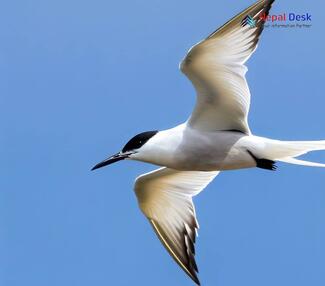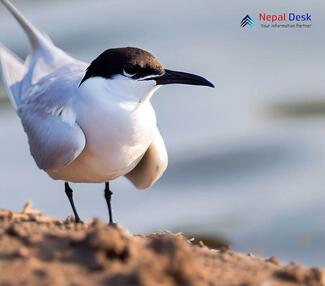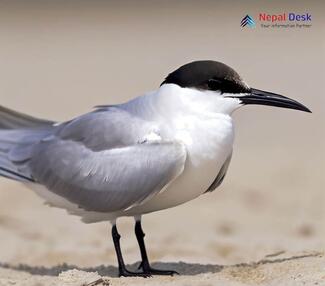Among the diverse family of seabirds, one species that truly stands out is the Gull-billed Tern. Known for their unique characteristics and fascinating behaviors, these birds have captured the interest of bird enthusiasts and ornithologists alike. In this article, we'll take a closer look at the taxonomy, physical features, habitat, diet, presence in Nepal, and an interesting point about Gull-billed Terns.
Taxonomy
Belonging to the family Laridae and genus Gelochelidon, the Gull-billed Tern has the scientific name Gelochelidon nilotica. This species was initially described by Johann Friedrich Gmelin in 1789. There are four subspecies of Gull-billed Terns recognized by the International Ornithologists' Union (IOC), which vary slightly in size and coloration.
Physical Features
Gull-billed Terns are medium-sized terns with a wingspan of around 100-110 cm and a body length of 33-43 cm. They have a distinguishable square-cut or gull-like bill, which is thick and black in color. Their plumage is predominantly light gray above and white below, while their legs are also black. During the breeding season, these terns sport a partial black hood that extends from their forehead to the nape.
Habitat
Fond of various wetland habitats such as marshes, ponds, lagoons, estuaries, and even agricultural fields with standing or slow-moving water bodies nearby; Gull-billed Terns have a widespread global distribution. Their breeding range spans across North America, Europe, and Asia - including regions like the Mediterranean, Black Sea, West Africa, the Middle East, and even Australia. Gull-billed Terns are also known to inhabit both coastal and inland areas, making them versatile among tern species.
Diet
One of the unique aspects of Gull-billed Terns is their diverse diet. Unlike most other terns that predominantly feed on fish by plunge-diving into the water, Gull-billed Terns primarily feed on insects – such as dragonflies and beetles – and catch prey on the wing. In addition to insects, they are also known to feed on small mammals, amphibians, reptiles, crustaceans, and occasionally small fish.
Presence in Nepal
While Nepal is a landlocked country and doesn't boast a coastline, it still provides suitable habitat for Gull-billed Terns in its wetlands. Generally appearing during the winter months, these birds can be found in popular bird-watching spots like Koshi Tappu Wildlife Reserve and Chitwan National Park. They are considered passage migrants or winter visitors in Nepal.
Interesting Fact:
When it comes to nesting, Gull-billed Terns showcase an interesting behavior called 'egg flip.' If their nest is disturbed or attacked by potential predators, these terns can use their bill to flip their eggs away from danger - sometimes even up to a distance of six feet! This strategy helps safeguard their eggs until conditions become safe enough to return them back to the nest.
Gull-billed Terns are fascinating creatures that offer a unique perspective into the world of seabirds. Their adaptability, diverse diet preferences, widespread geographical distribution, and intriguing behaviors make them a captivating topic for further study and appreciation. So next time you're near a wetland area or visiting Nepal during winter months




